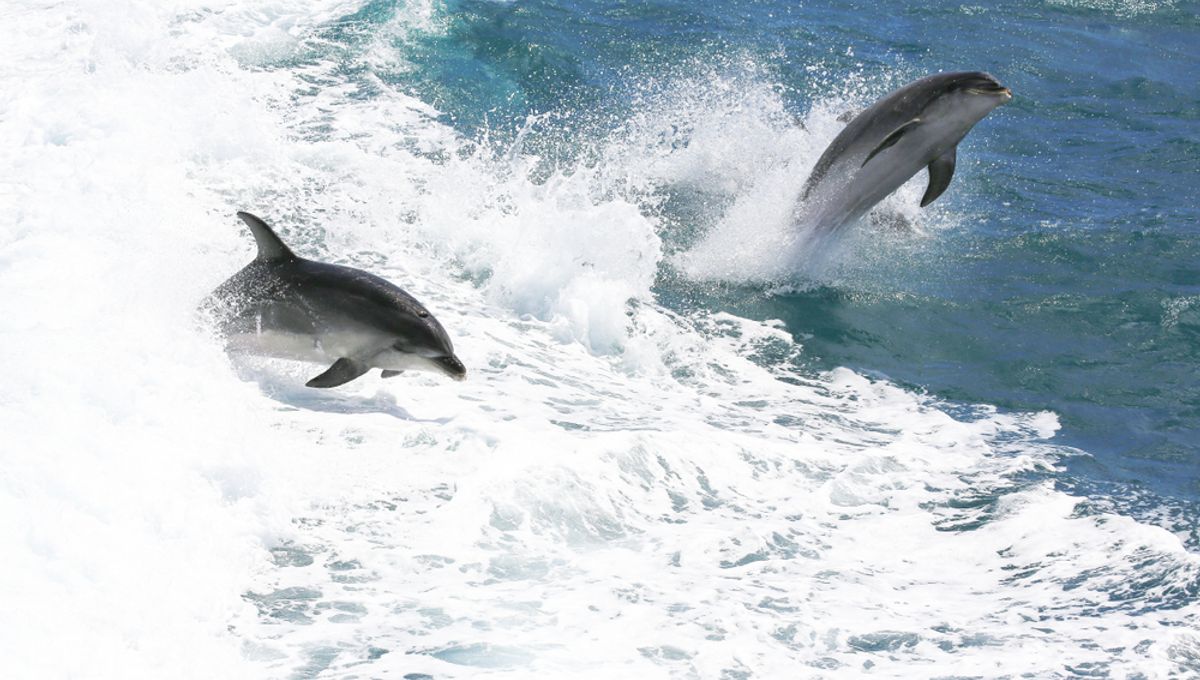
Regional accents are not just a human thing: Bottlenose dolphins have them, and new research reveals they can be different even between two populations whose separation is not impassable.
The New Zealand accent is so distinctive the national airline made its incomprehensibility a feature of its advertising. That, however, may be nothing to the dolphins, who might struggle to communicate with those living on the other side of the country. We don’t know that for sure – perhaps they just mock each other mercilessly while still knowing what is being said – but they certainly sound very different.
Dr Jessica Patiño-Pérez of Massey University recorded the whistles used by bottlenose dolphins at Great Barrier Island (GBI) off New Zealand Aotearoa’s north coast. She received recordings from another population at Doubtful Sound (DS) near the southern tip of the South Island from Dr Marta Guerra of Otago University, which would be the DS dolphins’ local campus if dolphins went to university.
Patiño-Pérez worked with colleagues at her own university to analyze these and compare between them and with dolphins recorded around the world.
Dolphins are very talkative animals, using sounds to find food and maintain group cohesion. Whistles, which have frequencies between 3,000 and 36,000 Hz and last up to 4 seconds, are just one of three types of sound used to talk to each other.
The local environment can shape whistling: dolphins that live in deeper water use lower sounds than those that are more coastal and can afford the high notes that can’t travel as far. Dolphins have what are called “signature whistles”, which are thought to be equivalent to their names, a way of identifying themselves to others in the group. The team ignored these, and focused on the common whistles used by many or all group members.
It’s already been established that dolphins use whistles to coordinate behavior, recognize each other, and generally maintain harmony. All that depends on being able to understand what a particular whistle means. If populations become isolated from each other for long enough, it makes sense their languages would drift, as human speech does.
What we don’t know, however, is how long it takes for that to reach the point where different groups of dolphins can’t understand each other. Genetically, the GBI and DS populations are known to be largely distinct, so it seems they haven’t been mixing much for a long time.
This is certainly reflected in their communication: Whistle contour, duration, and end frequency diverge greatly between the two groups. The sounds the team recorded are so different computer programs can identify which population a set of whistles came from with an accuracy of 90 percent. “The key differences were whistle-type contour, duration, and end frequency,” the authors write.
“Whistles from DS were longer in duration and had more inflection points than whistles from GBI,” the authors write. “At a global scale, the acoustic parameters of the whistles from the New Zealand populations clustered with populations found in the Northern Hemisphere, rather than to those in the Southern Hemisphere.” Perhaps Aotearoa’s waters were colonized by imports from the north along with its lands.
Curiously, despite living in shallower waters, the GBI dolphins are the ones to use lower frequencies, although most of the populations’ vocal ranges overlap. The authors speculate the DS dolphins may have been adapting their tone in response to the number of boats at the popular tourist spot.
We still don’t know if bottlenose dolphins from one population would be able to understand a member of the other if it ended up in their territory, or if they’d just make fun of it for whustlun stringe. It’s possible, however, that mutual incomprehension could deepen the geographic division – no point trying to hook up with a strange dolphin if they can’t understand what you’re saying.
The study is published open access in the New Zealand Journal of Zoology.
Source Link: Dolphins Have Local Accents On Opposite Sides Of New Zealand